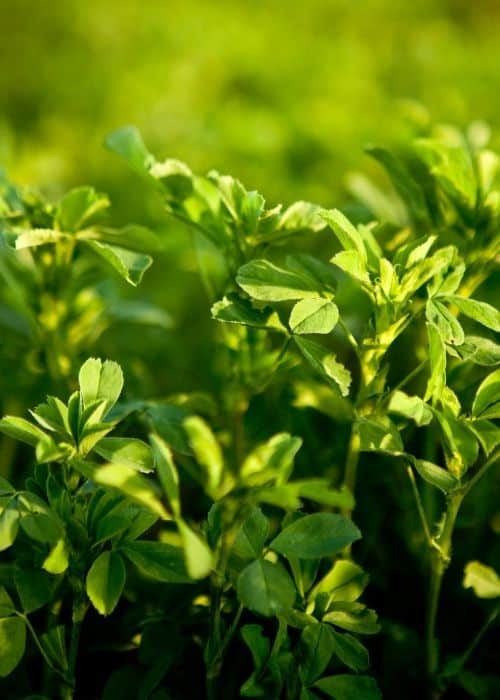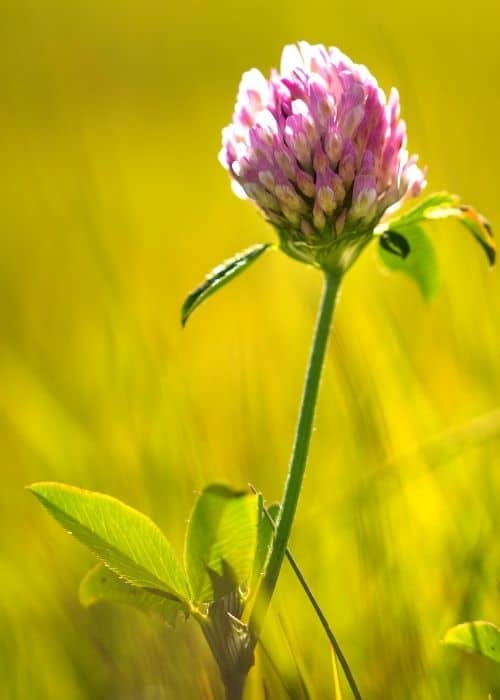As humans, we function significantly better after a good rest. The same goes for plants within a pasture. Without rest, they do not produce as well as they should. When a pasture is grazed, animals tend to eat the leaves first (the plant’s energy producers). Ample rest for a pasture gives plants time to replenish their leaves and energy supply.
How much rest is needed depends on the growing season and how fast forages are growing. While forages are growing quickly, they can rest as little as 14 days. As growth slows, the ideal recovery period is 30 days. Once the cooler season moves in, your pasture will benefit from a 45 to 60-day rest.
If you’ve struggled with a pasture that is drying out or dying out, you’ll want to read on about what you can do to create one that will instead flourish. It starts with implementing a specific grazing system for your pasture, allowing for sufficient rest. This will ensure plant recovery, growth, energy replenishment, and root development.
How Long Does Your Pasture Need to Recover?
To maintain a sustainable pasture for your animals, it must have adequate time to rest and recover. But how much rest does your pasture need, and for how long does it need to rest?
It depends on a few different factors. Usually, you can determine the approximate amount of time to rest your fields based on the type of plants you have, their regrowth rate, and the seasonal weather. It also depends on how severely the pasture was grazed. The more severely it was grazed, the longer it will take to recover.
Plants & Regrowth
When it comes to being grazed, different plants react to it differently. If a tall plant is grazed short, it will rely heavily on its roots for regrowth. A short or low-growing plant has numerous leaves closer to the ground, so even after grazing, the remaining leaves will supply the plant with energy for regrowth.

Alfalfa
The essential factor is to rest your paddocks while some leaves still remain. This is especially true with tall plants. Tall plants will face issues with regrowth if they are grazed too low. Even though older leaves are not as efficient at photosynthesis, a plant should use them rather than tapping into its stored energy in its roots.

Red Clover
Do you want to invest in short or tall plants for your pasture? Below is a chart of the most popular tall and short plants and grasses available.
Tall Plants | Short Plants |
|---|---|
Alfalfa | Kentucky bluegrass |
Red Clover | Common / |
Alsike Clover | Bermudagrass |
Smooth bromegrass | Cell |
Orchardgrass | Cell |
Seasonal Conditions
The length of the recovery period is also dependent upon the seasons. For example, spring pastures may grow so quickly that they are ready to be grazed again in 10-14 days. On the other hand, cool-season grasses essentially stop growing when outside temperatures hit 80°F on a summer day.

Kentucky bluegrass
Is your pasture filled with cool-season grasses or warm-season grasses? Knowing this will help you understand when your forage will optimally grow and when its growth may reach a standstill.
Cool Season Grasses | Warm Season Grasses |
|---|---|
Orchardgrass | Switchgrass |
Kentucky bluegrass | Big bluestem |
Tall Fescue | Little bluestem |
Bromegrasses | Sideoats grama |
Perennial ryegrass | Indiangrass |
A good rule of thumb is that when pasture growth is slow, usually during the colder months, the rest period needs to be longer. When pasture growth is fast, generally during the warmer months, the rest period can be shorter.

Ornamental-Grasses: Sideoats and Blue-Grama
Develop a Rotational Grazing System
Implementing a rotational grazing system is the most efficient way to get the most out of your pasture, as the livestock is only in the paddock for a limited amount of time. They should be strategically moved every few days, which would give designated areas of your pasture necessary rest.
Splitting Up Your Pasture
If animals are constantly grazing, what rest is your pasture getting? None! However, if you split up your field, designating specific sections for grazing would leave the others available for recovery. There are several creative ways you can do this. The more paddocks you divide your pasture into, the larger the areas of rest will be.
Also Read: How To Keep Cows From Wasting Hay
For example, one way to divide it is to split your pasture into four sections. One section would be reserved for grazing while the others are resting. This gives 75% of your pasture a chance to rest at one time while 25% is being grazed.
Even better, divide your pasture into twelve sections and rotate the grazing through them. Then 94% of the paddock is getting rest while 6% is being grazed.
What is Overgrazing?
Overgrazing is a failure to maintain the balance between animal rotation and forage growth.
Don’t Overgraze
An overgrazed pasture will require a more extended rest period. Appropriate rotational grazing management is contingent on moving animals before they have the opportunity to regraze flourishing grasses.
Keep in mind - animals are intelligent. They will eat appetizing grasses right down to the ground. Unfortunately, this will only ensure that there will be a strain on the higher quality forage in your pasture. The weak, overgrazed pasture will be prone to erosion, which can lead to the loss of quality topsoil and a reduction in soil organic matter.
Animals should be removed when pastures are grazed down to a height where there is still a sufficient amount of leaf remaining for quick regrowth.
Watch this very helpful video and some useful tips for healing an overgrazed pasture.
Avoid Over Resting Your Pasture
While we’ve discussed the importance of resting your pasture for the appropriate amount of time, over rest is often overlooked. Unfortunately, it can be just as detrimental to your pasture as overgrazing. Over rested pastures have an abundance of dead leaves. This makes the process of photosynthesis for regrowth all but impossible.
Even if some leaves are still present, one blade of grass can effectively execute photosynthesis for about three or four weeks. After that, it begins losing this ability along with its nutritional value for the animals that consume it.
Rest Times May Vary
Ultimately, your pasture may not depend on the facts and figures. To determine the proper grazing and recovery period, keep an eye on your pasture every day! Look around and see how growth is going.
Is your pasture recovering at an acceptable rate? If there is less growth than you thought, it will be necessary to extend the rest period. If there is more, then you can move the animals into that paddock more quickly.
Once grasses or plants have grown to three or four inches tall, the grazing period can begin. Once grasses and plants have been grazed down to one or two inches, it is time to rotate animals in the next paddock.
If you are unsure, it is always best to err on the side of more rest
Conclusion
In closing, ensuring that your pasture receives the proper rest time requires implementing a solid rotational grazing system. It will also require you to be a good manager of your system. Observe pastures frequently for regrowth, recovery, and overgrazing and make proper adjustments to the plan as necessary.
Remember, it takes grass to grow grass. Give your pasture the time it needs to do so.
